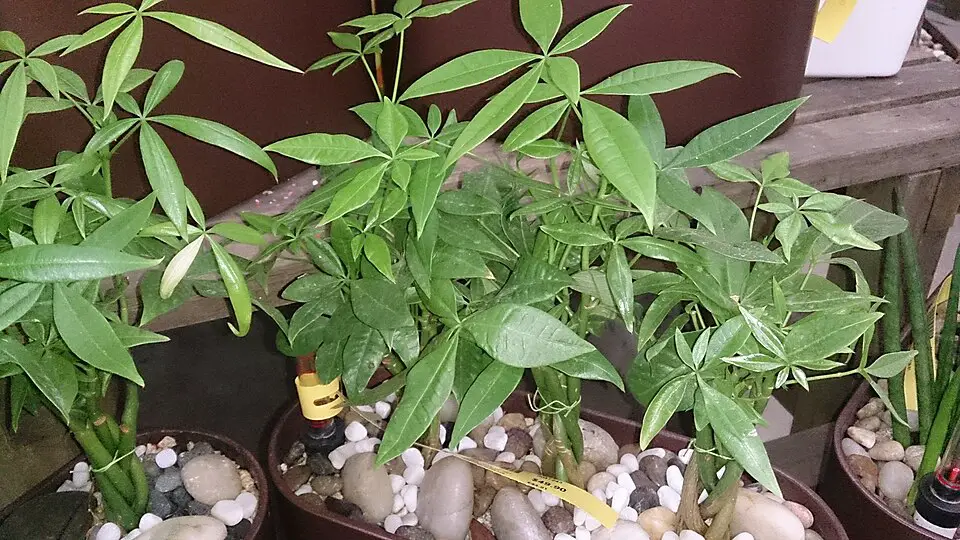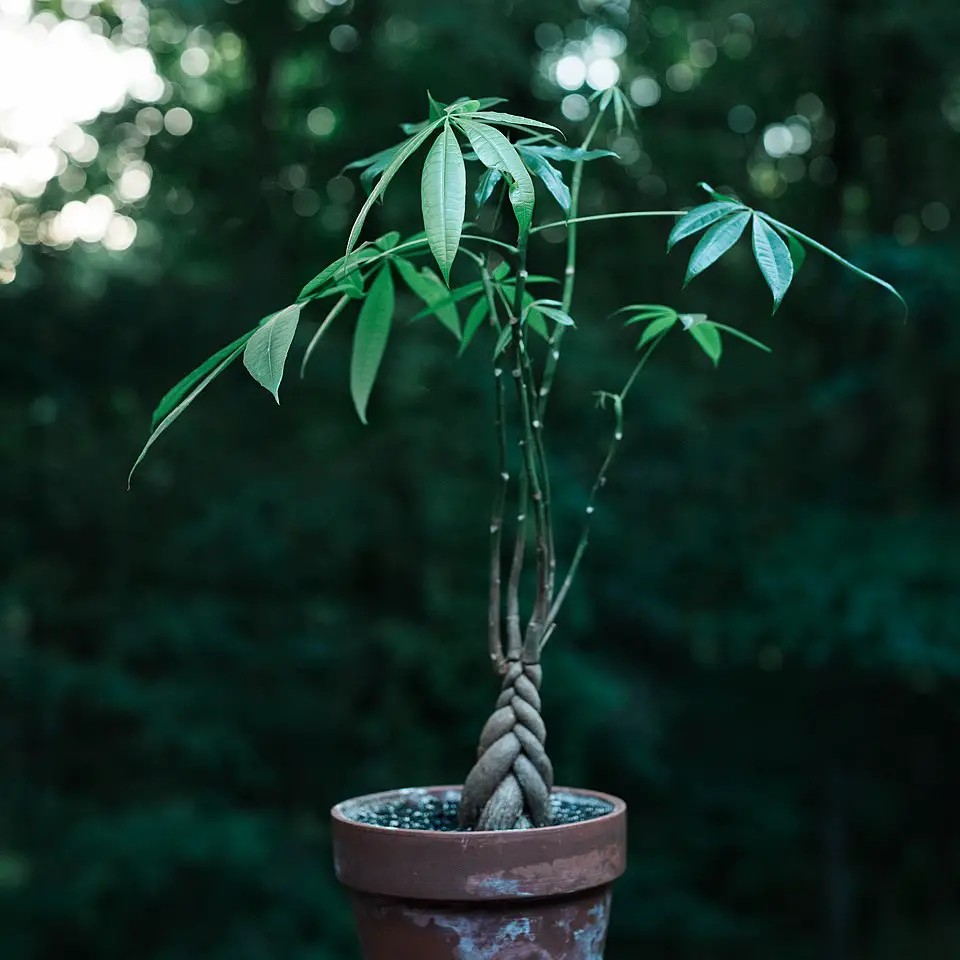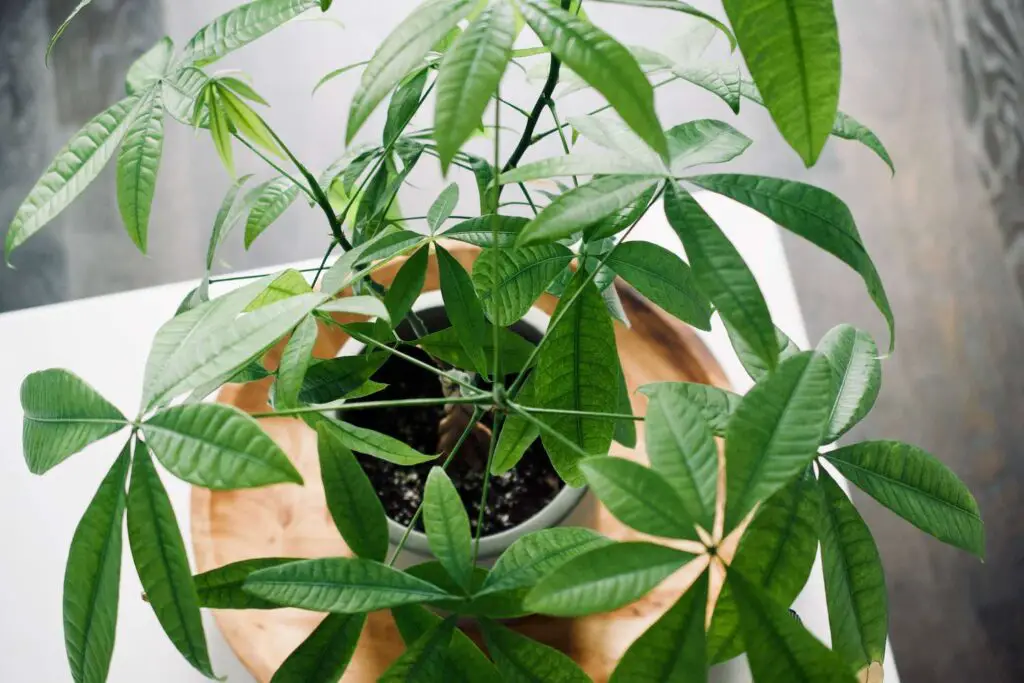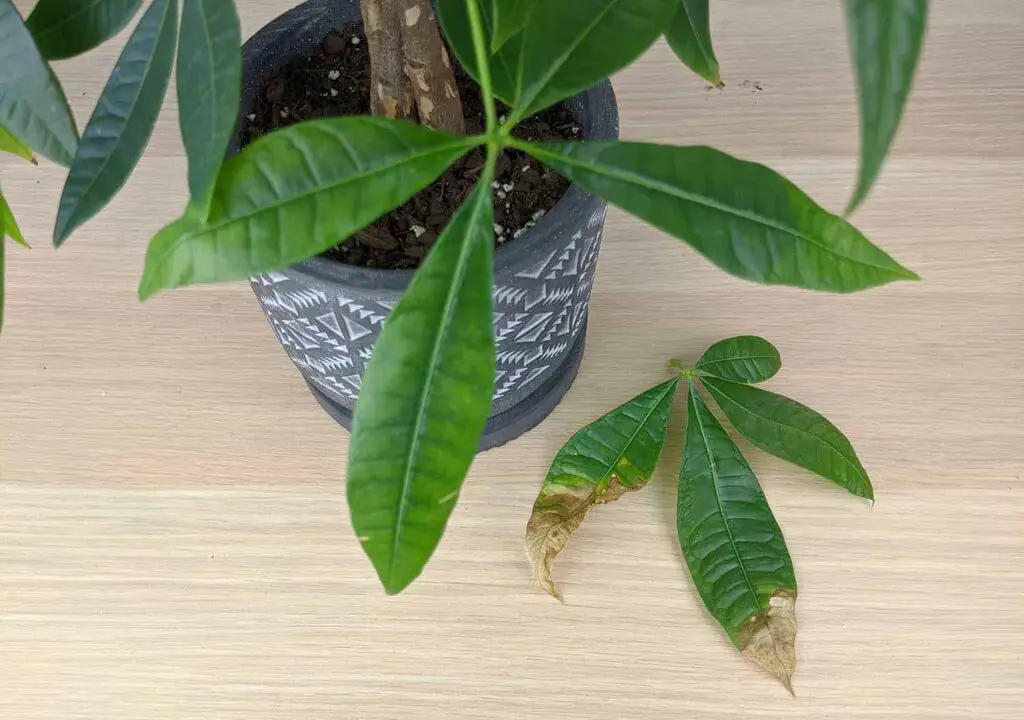To grow money tree corms indoors, start by selecting healthy corms. Plant them in well-draining soil, ensuring they receive bright, indirect light. Water them sparingly, allowing the soil to dry out between waterings. With proper care, your money tree will thrive and may even reward you with beautiful foliage.
Understanding Money Trees
The money tree, known scientifically as Pachira aquatica, is a popular houseplant. It is often associated with good luck and prosperity in various cultures. This plant is native to Central and South America, where it commonly grows near riverbanks. The money tree is easily recognizable by its glossy green leaves and unique braided trunk.

Growing money tree corms indoors can be an enjoyable and rewarding experience. Corms are swollen underground stems that store nutrients. They serve as a food reserve for the plant, promoting healthy growth. By focusing on proper care techniques, you can ensure that your indoor money tree flourishes.
Essential Requirements for Growing Money Tree Corms
To successfully grow money tree corms indoors, certain conditions must be met. These include light, water, temperature, and soil quality. Understanding each of these factors can help you create an ideal environment for your plant.
Light Conditions
Money trees thrive in bright, indirect sunlight. Too much direct sun can scorch their leaves, while too little light may stunt their growth. Consider placing your money tree near a window with filtered light. If sufficient natural light is unavailable, you can supplement with artificial grow lights.

Watering Needs
Watering is another crucial aspect of caring for money tree corms. Overwatering is a common mistake that can lead to root rot. To avoid this, allow the top inch of soil to dry out before watering again. It is essential to ensure proper drainage in the pot to prevent excess moisture from accumulating.
Temperature and Humidity
Money trees prefer a warm environment with temperatures ranging from 65°F to 80°F (18°C to 27°C). They also appreciate humidity levels of around 40% to 60%. If your indoor air is dry, especially during winter months, consider using a humidifier or placing a tray of water near the plant to maintain humidity.
Soil Quality
The right soil mix plays a vital role in the health of your money tree. Use a well-draining potting mix that retains some moisture but does not become soggy. A mix designed for succulents or a combination of peat moss, perlite, and pine bark works well.

Steps to Grow Money Tree Corms Indoors
Growing money tree corms indoors involves a few straightforward steps. Follow these guidelines to ensure successful growth:
- Select healthy corms from a reputable source.
- Choose a pot with drainage holes to prevent overwatering.
- Fill the pot with a well-draining soil mix.
- Plant the corms about an inch deep in the soil.
- Place the pot in a location with bright, indirect light.
- Water lightly after planting and then follow the watering guidelines.
- Monitor temperature and humidity levels regularly.
- Fertilize sparingly during the growing season with a balanced fertilizer every month.
By adhering to these steps, you will create a thriving environment for your money tree corms. Regular monitoring will help you address any issues that arise, ensuring that your plant remains healthy and vibrant throughout its growth journey.
Common Issues and Solutions
As you care for your money tree corms, you may encounter some common issues. Recognizing these problems early can help you take corrective action before they affect the plant’s health significantly.
- Yellowing Leaves: This may indicate overwatering or poor drainage. Check the soil moisture and adjust your watering schedule.
- Leaf Drop: Sudden leaf drop can occur due to temperature changes or insufficient light. Ensure consistent conditions for your plant.
- Pest Infestations: Common pests like spider mites and aphids can affect your money tree. Regularly inspect your plant and treat infestations promptly with insecticidal soap or neem oil.
By understanding these common issues and their solutions, you can maintain the health of your money tree corms and enjoy their beauty for years to come.

Propagating Money Tree Corms
If you want to expand your collection of money trees, propagating corms is a straightforward process. Not only does this method allow you to create new plants, but it also enables you to share the joy of gardening with friends and family. Understanding the propagation process can yield successful results.
When to Propagate
The best time to propagate money tree corms is during the spring or early summer. This is when the plant is actively growing and can recover quickly from the stress of being divided. Look for healthy, mature corms that have several shoots or roots for optimal propagation outcomes.
Steps for Propagation
Follow these steps to propagate your money tree corms effectively:
- Choose Healthy Corms: Select corms that are firm and free of any signs of disease or rot.
- Prepare the Soil: Use fresh, well-draining potting soil to provide a healthy environment for the new plant.
- Remove the Corms: Carefully take the corms from the parent plant. Use clean tools to minimize injury and contamination.
- Cutting Technique: If dividing corms, make clean cuts to ensure each section has roots and shoots.
- Plant in Soil: Place the corms in the prepared potting mix. Bury them about an inch deep, ensuring they are oriented correctly.
- Water Sparingly: After planting, water lightly to settle the soil around the corms. Avoid overwatering at this stage.
- Provide Ideal Conditions: Keep the propagated corms in a warm location with bright, indirect light. Maintain consistent moisture without waterlogging.
Fertilizing Money Tree Corms
Proper fertilization is crucial for the growth and health of money tree corms. Fertilizers provide essential nutrients that help plants thrive. However, over-fertilizing can cause damage, so understanding how and when to fertilize is important.
Types of Fertilizers
There are several types of fertilizers suitable for money trees. Here are some common options:
- Liquid Fertilizers: These are easy to apply and can be diluted with water. They are ideal for quick nutrient absorption.
- Slow-Release Fertilizers: These provide nutrients gradually over time. They are convenient for busy gardeners who may forget to fertilize regularly.
- Organic Fertilizers: Compost or worm castings can enrich the soil naturally. They improve soil health in addition to providing nutrients.
Fertilization Schedule
A regular fertilization schedule will help your money tree corms grow robustly:
- Spring Feeding: Begin fertilizing in early spring as the plant enters its active growth phase.
- Monthly Applications: Apply a balanced fertilizer every month during the growing season (spring and summer).
- No Feeding in Winter: Avoid fertilizing during fall and winter when the plant’s growth slows down significantly.
Pest Management Strategies
Pests can pose a serious threat to your money tree corms. Being proactive in pest management is essential for maintaining healthy plants. Here are some effective strategies:
Preventative Measures
The best way to manage pests is through prevention. Consider these tips:
- Regular Inspections: Check your plants weekly for any signs of pests or diseases.
- Cleanliness: Keep the area around your money tree tidy. Remove fallen leaves and debris that could harbor pests.
- Avoid Overcrowding: Give your plants enough space to breathe. Crowded plants are more susceptible to pest infestations.
Treatment Options
If you do encounter pests, there are several treatment options available:
- Insecticidal Soap: This is effective against soft-bodied insects like aphids and spider mites.
- Neem Oil: A natural pesticide that disrupts pest life cycles without harming beneficial insects.
- Manual Removal: For small infestations, simply wiping the leaves with a damp cloth can remove pests effectively.
By staying vigilant and employing these strategies, you can protect your money tree corms from unwanted pests, ensuring they remain healthy and vibrant throughout their growth cycle.
2>Maintaining Healthy Money Tree Corms Once you have successfully grown and propagated your money tree corms, maintaining their health becomes crucial. Proper care will enable your plants to thrive and exhibit their lush foliage. This section will cover essential maintenance practices, including pruning, repotting, and monitoring environmental conditions. Pruning is an important aspect of maintaining your money tree’s health. It encourages new growth and helps shape the plant. Here are some guidelines for effective pruning: As your money tree grows, it may outgrow its pot. Repotting ensures that the plant has enough space for root growth and fresh soil for nutrients. Here’s how to repot your money tree corms effectively: Your money tree corms require specific environmental conditions to thrive. Monitoring these factors can greatly influence their overall health and growth. Money trees prefer bright, indirect light. However, they can also adapt to lower light conditions. Keep in mind these points regarding light exposure: Money trees thrive in moderate to high humidity. Maintaining appropriate humidity levels can enhance their growth: Car ing for your money tree corms may vary with the changing seasons. Understanding these seasonal adjustments will help you keep your plants healthy year-round. During the growing season, your money tree will require more attention. Consider these care tips: As temperatures drop and days become shorter, adjust your care routine accordingly: By understanding these seasonal care adjustments, you can provide optimal conditions for your money tree corms throughout the year, ensuring their continued health and growth. For t hose looking to take their money tree growing experience further, there are several advanced techniques that can significantly enhance the growth and overall health of your money tree corms. These methods include specialized watering techniques, enhanced lighting strategies, and propagation methods that go beyond basic corm planting. Watering can significantly impact the health of your money tree. Consider the following advanced techniques to improve your watering practices: Lighting is crucial for healthy growth. Here are some advanced lighting strategies to consider: Besides propagating from corms, there are other methods to expand your money tree collection: Caring for money tree corms indoors can be an incredibly rewarding endeavor. By understanding the specific needs of these plants, including light, water, humidity, and soil requirements, you can create an ideal environment for growth. Regular monitoring and adjustments based on seasonal changes will ensure your plants remain healthy and vibrant throughout their life cycle. Implementing advanced techniques such as specialized watering practices and enhanced lighting strategies can further improve the health of your money trees. Additionally, exploring various propagation methods allows you to share these beautiful plants with others or expand your personal collection. Ultimately, patience and consistent care will lead to flourishing money tree corms that not only beautify your space but also bring positive energy into your home. Embrace the journey of growing these remarkable plants and enjoy the satisfaction that comes with nurturing them to their full potential.Pruning Techniques
Repotting Your Money Tree
Optimal Environmental Conditions
Light Requirements
Humidity Levels
Seasonal Care Adjustments
Spring and Summer Care
Fall and Winter Care
Advanced Techniques for Enhanced Growth
Specialized Watering Techniques
Enhanced Lighting Strategies
Alternative Propagation Methods
Final Thoughts
